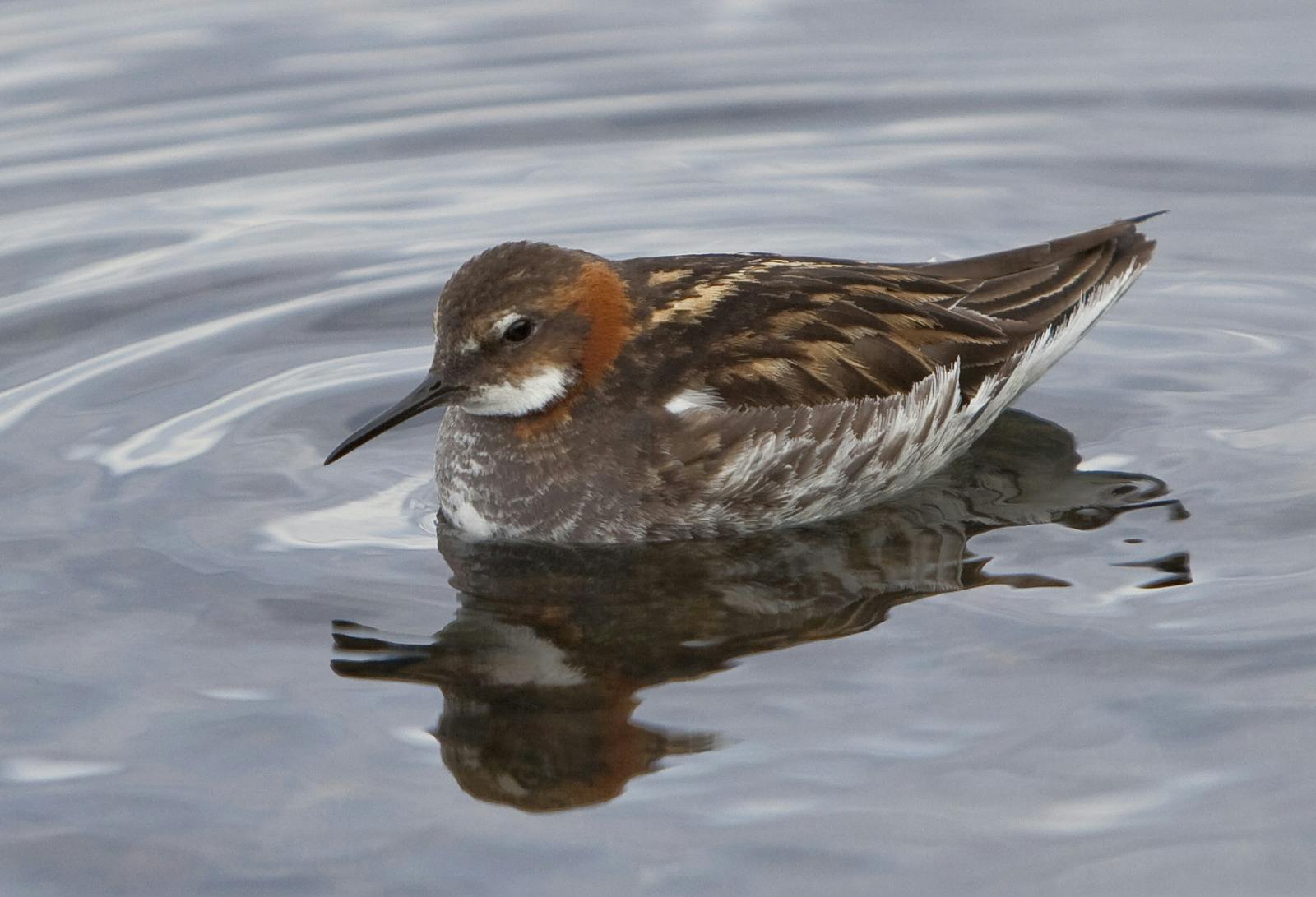
The Red-Necked Phalarope
Spot the red-necked phalarope: Where did it come from?
The Red-necked phalarope (Phalaropus lobatus) is a wader of the Phalaropus genus belonging to shorebirds (Charadriiformes). The Phalarope genus is a small group of birds with only three living species. Besides the red-necked phalarope, the red phalarope (called the grey phalarope in Europe) (Phalaropus fulicarius) and the Wilson's phalarope (Phalaropus tricolor) belong to the genus. The red-necked phalarope is a migratory bird that leaves the country in the autumn but arrives back in the spring.
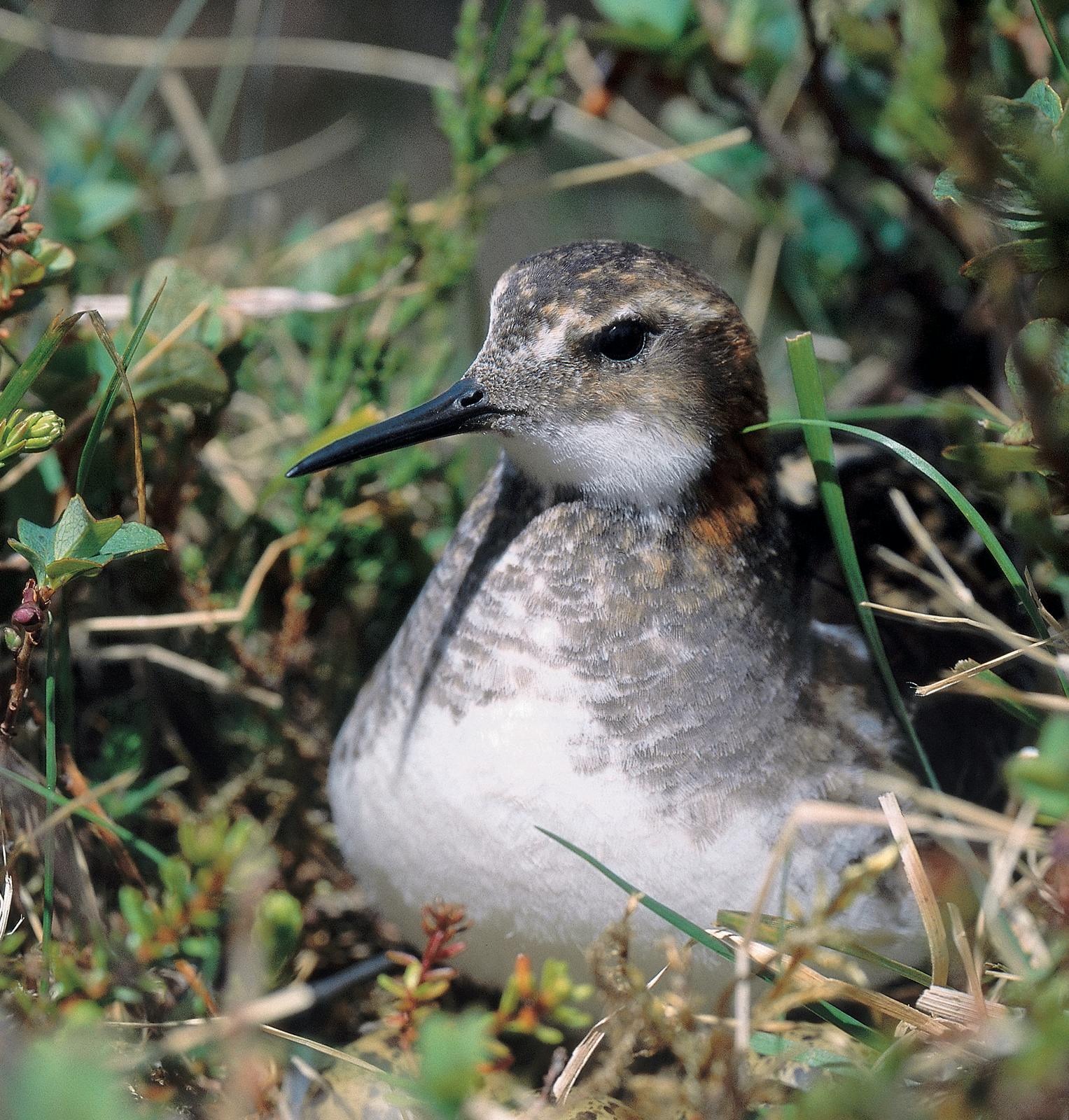
Embark on a captivating journey to unravel the enchanting secrets of Icelandic nature and wildlife by immersing yourself in the rich offerings of the Perlan Museum in Reykjavík. Here, you will find interactive exhibits that invite you to delve deeply into every facet of Iceland's awe-inspiring wonders. This unique and immersive experience, carefully curated for visitors of all ages, consolidates the diverse beauty and ecological richness of Iceland into a single, remarkable destination at the Perlan Museum. Learn more about Icelandic nature and wildlife here.
The Colours and Graceful Flight of the Red-Necked Phalarope
The red-necked phalarope is a delicate bird 16.5 - 20 cm (6.5-8 in) in length and weighs 28 - 40 gr (1-1.4 oz.) When the bird arrives in Iceland in spring, it is wearing summer plumage and is very colourful. Characteristic is the rusty colour forming a patch around the bird's neck with a white spot on the throat. The English name "red-necked phalarope" has its origin in this reddish patch. The belly is white, but the back is grey. A white wing stripe is noticeable during flight.
The bird flies fast in a zig-zag motion but mostly short distances during the breeding period. The female has brighter colours than the male, but otherwise, the sexes look alike. The red-necked phalarope has a black bill and dark-lobed toes, which is a characteristic of the phalarope genus. The red-necked phalarope is a good flyer, rushing from the water surface when disturbed, landing gently on the surface again a short distance away.
The bird is not only a good flyer and swimmer but also a good diver.
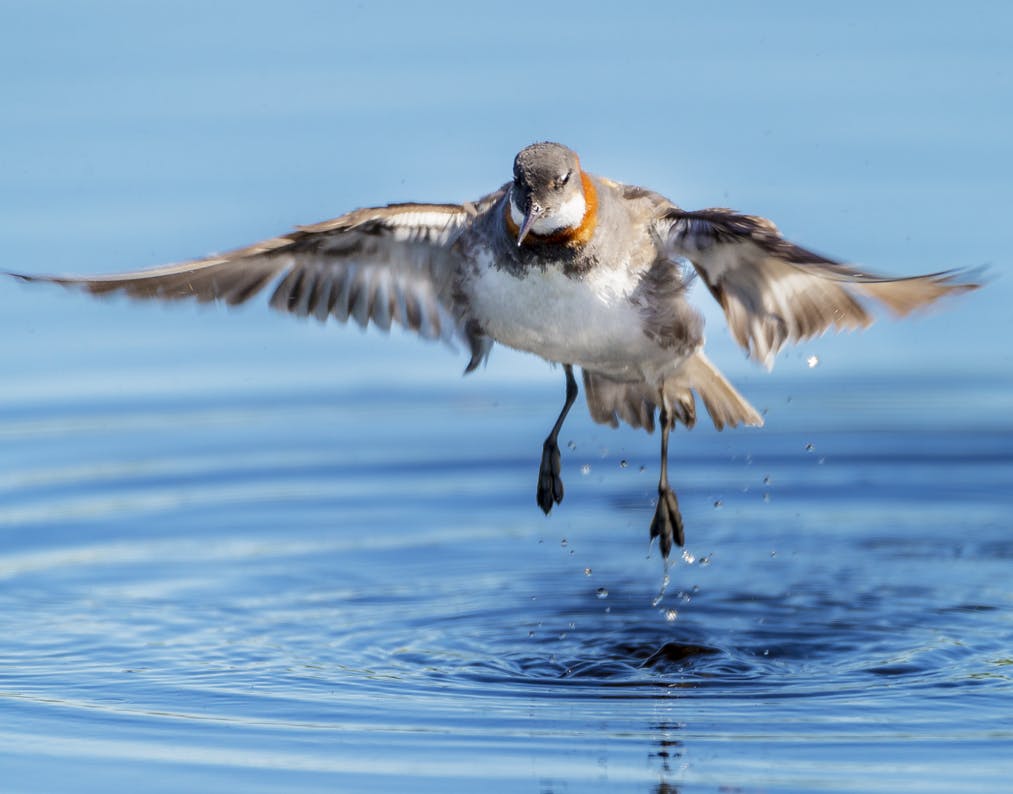
The red-necked phalarope is common in Iceland and can be found both in the lowlands and highlands as long as there are nutritional ponds and wetlands within its reach. The red-necked phalarope is one of the last migratory birds to arrive in Iceland in spring. The first birds appear in the middle of May, and then our bird fauna is finally complete.
The red-necked phalarope feeds on all kinds of invertebrates, but mostly chironomids larvae, water beetles (Agabus bipustulatus) and small crustaceans stirred up from the sediment by the bird. The bird spends the winter at sea feeding mostly on zooplankton. The Icelandic breeding population is about 30-50 thousand pairs.
Unconventional Breeding, Mysterious Winter Journeys, and Darwinian Connections
The red-necked phalarope is an interesting bird. The female is bigger in size, has brighter colours, and behaves like a dominant male, reversing the more common avian sex roles. The female pursues the male during the breeding period and can be quite aggressive. She protects her male and breeding site towards other females. After breeding, the female chooses her nest site, lays four eggs and leaves. The male incubates the clutch for 17-21 days.
Polygamy is well known among female phalaropes where they own two clutches with different males. The nest is a small dent on the ground lined with dry hay and well hidden in the surrounding vegetation close to wetlands. The young hatch well-developed from rather large brownish eggs with dark spots. About 24 hours after hatching, they leave the nest and follow the male to the feeding grounds.
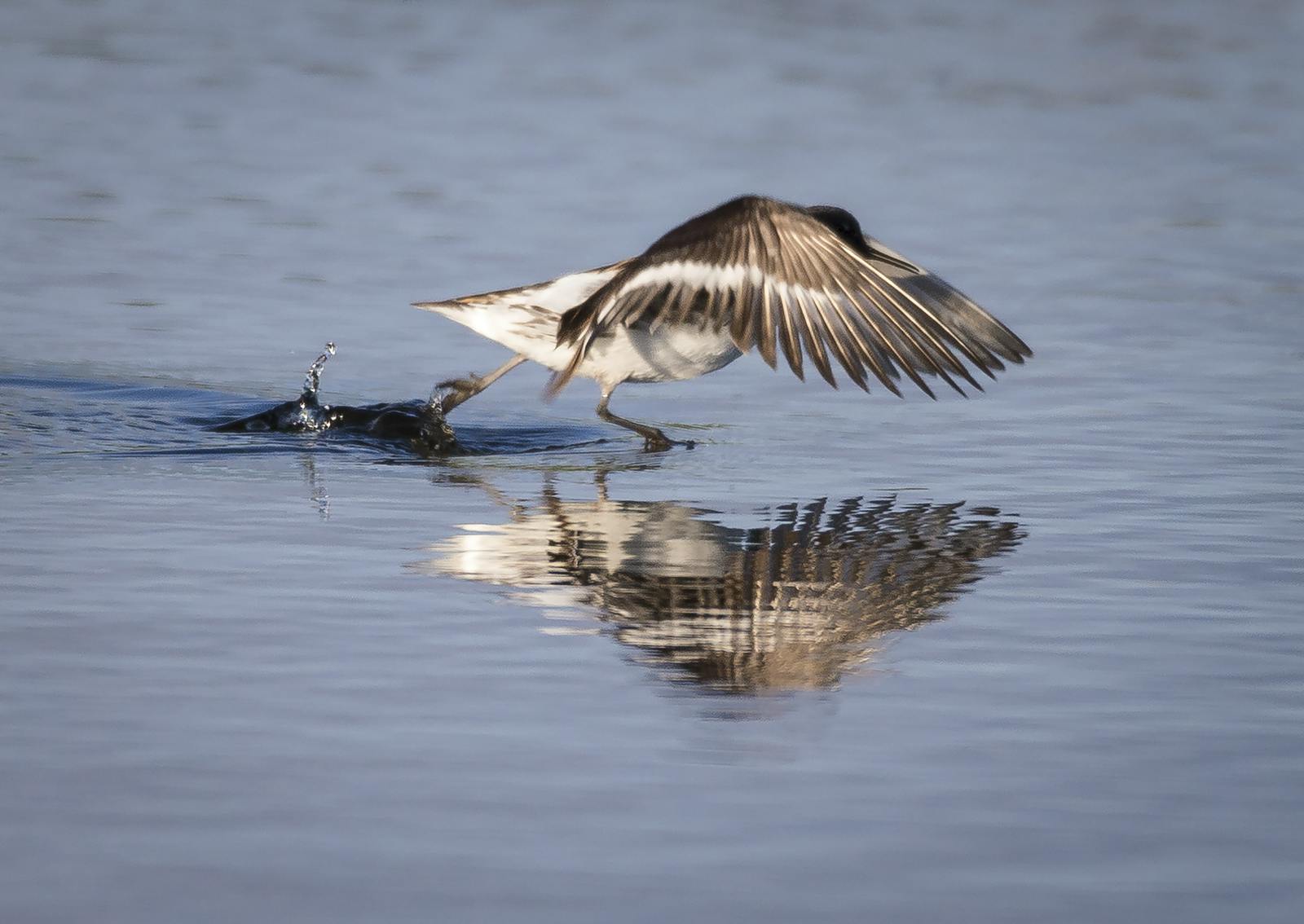
The young have a golden brownish colour with dark spots on the head and back, a white belly and a dark bill. They are easily spooked and seek cover whenever they are disturbed. The male protects the young for about three weeks but leaves them as soon as they are independent, which is just before they can fly.
Winter Plumage
In late summer, the red-necked phalarope changes breeding plumage to winter plumage and becomes light blue-grey with a white belly and a dark patch along the eyes. At about the same time, it leaves the country, usually in late August. For many years, it was unknown where the Icelandic red-necked phalarope stayed during the winter.
In the year 2015, a bird, which had been marked the previous summer with a datalogger, was recaptured and revealed his secrets about the wintering areas. These small birds take on a remarkable adventure south to the equator. The 33 - 43 cm (13-17 in) wingspan carries the delicate red-necked phalarope over 10.000 km (6.200 miles) from Iceland to Peru in South America. There, it spends the winter in the company of Darwin's animals close to the Galapagos islands.
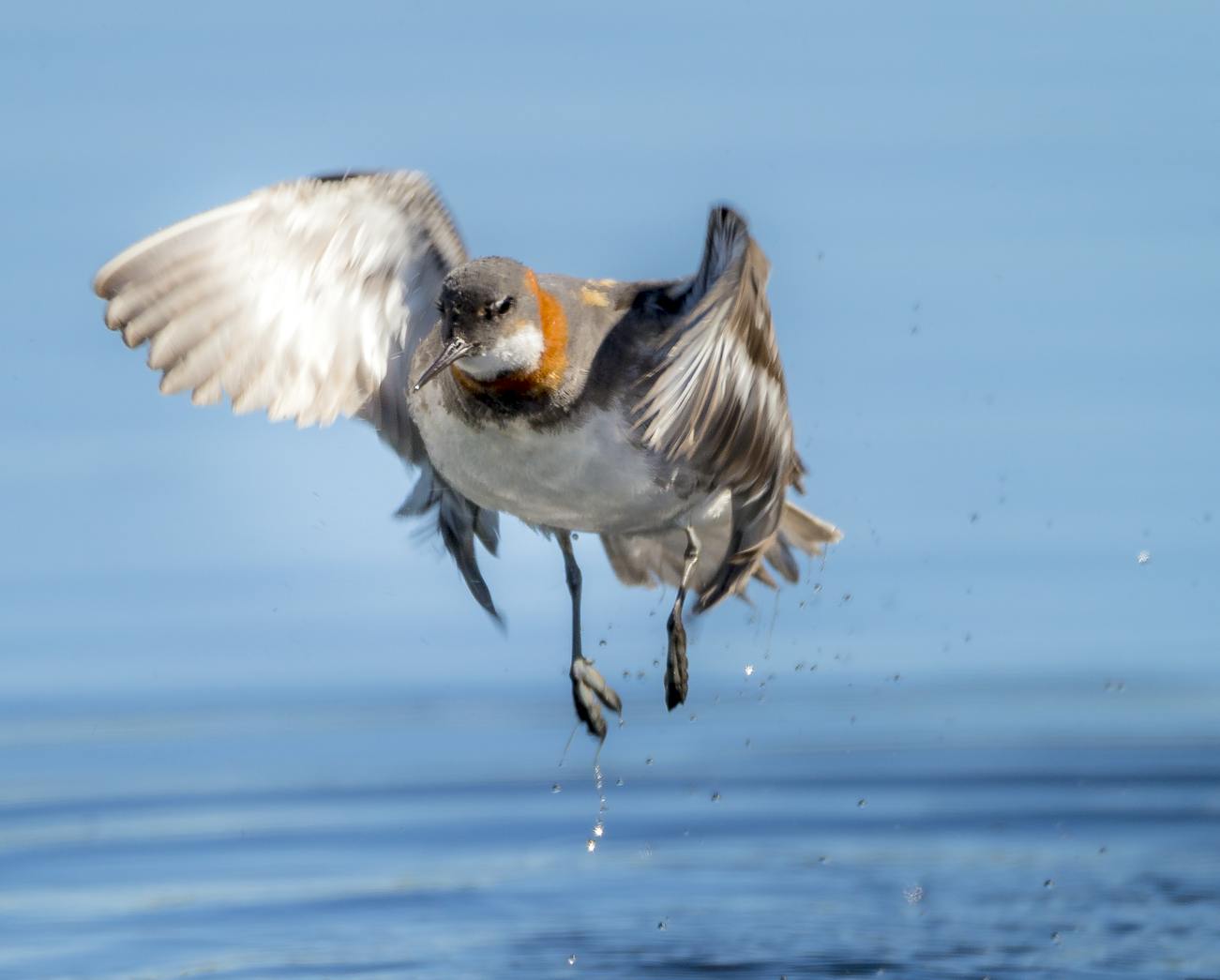
The Red-Necked Phalaropes Nickname
The red-necked phalarope is sometimes called "the writer". This name is probably because of his feeding behaviour as he swims in small circles on the water's surface. He then "writes" in the sediment with his loped toes when he swirls up invertebrates and when he picks them with his delicate "writing tool".
A Few Delicate Facts About the Red-Necked Phalarope
- The red-necked phalarope spends about 9 months at sea each year.
- Avian sex roles are reversed by the red-necked phalarope as females fight for the male's attention, which in turn incubates and raises the young.
- Icelandic red-necked phalaropes migrate over 6.200 miles from the equator wintering areas to the breeding areas in Iceland.
- The phalarope genus is one of the smallest bird genera, with only three living species.







